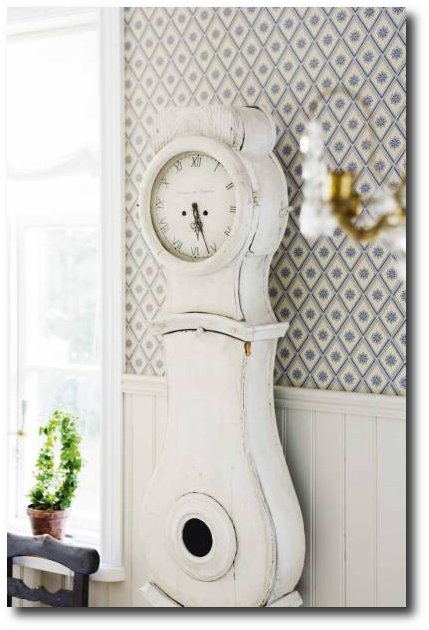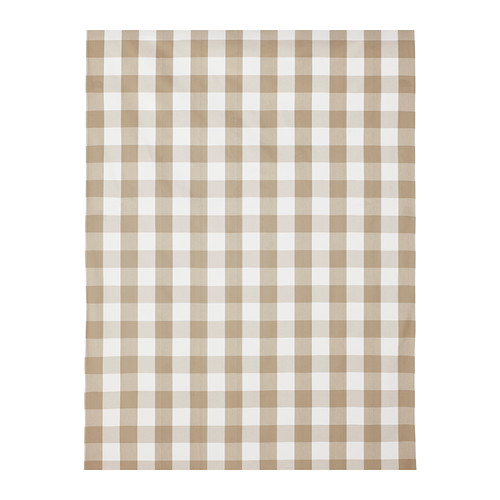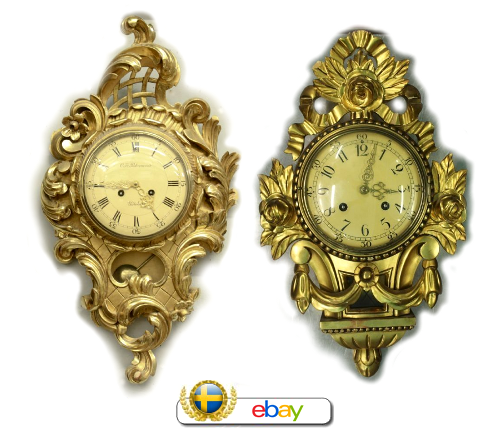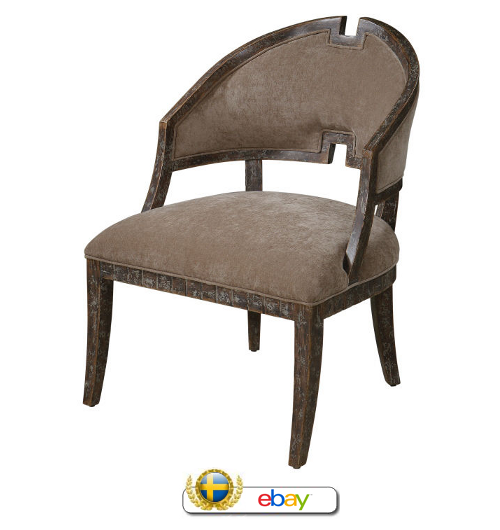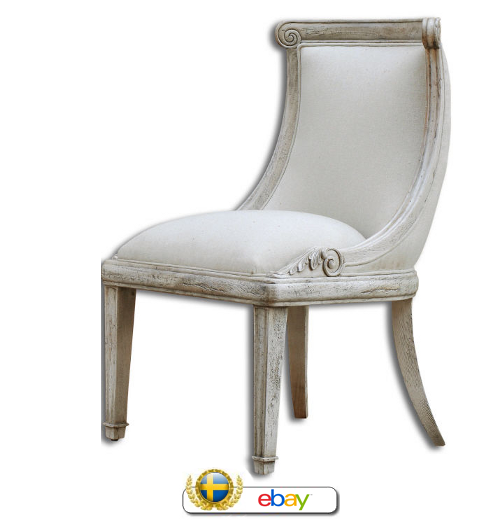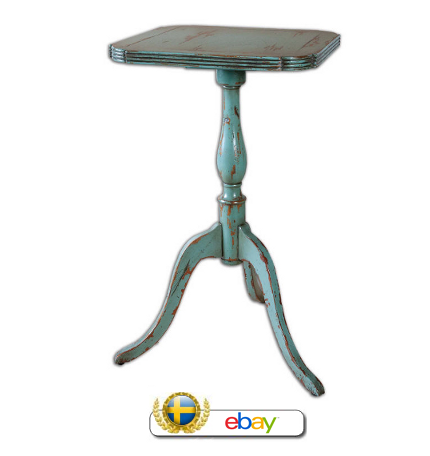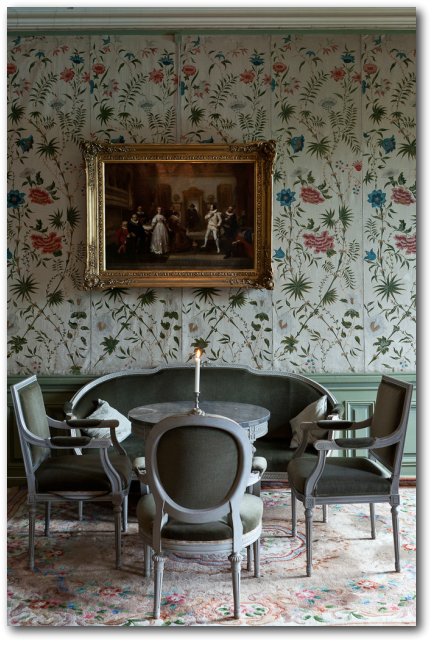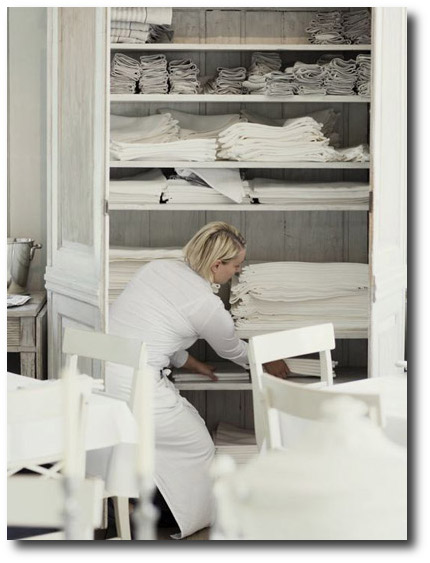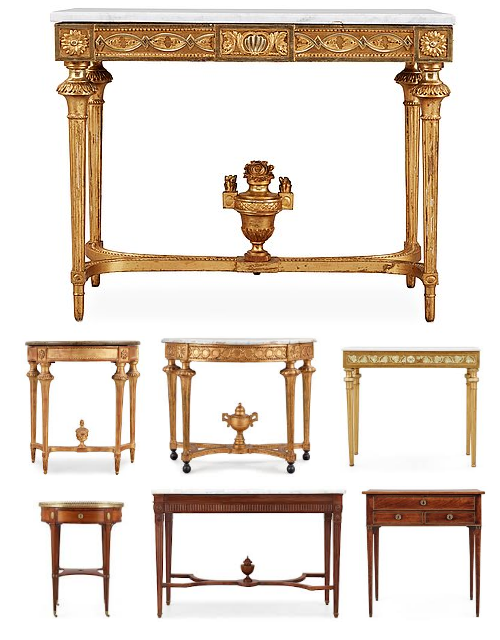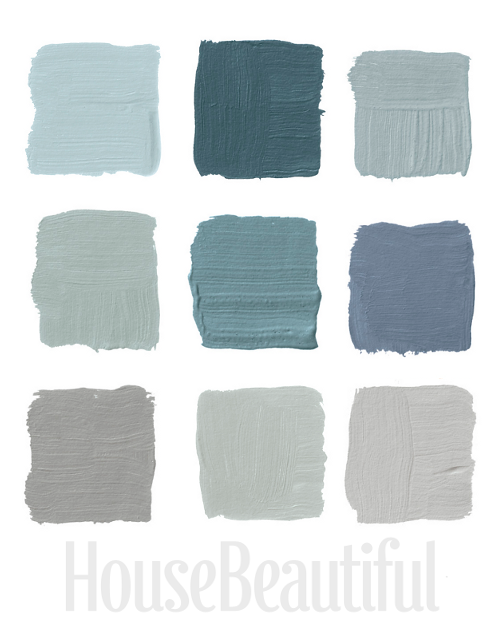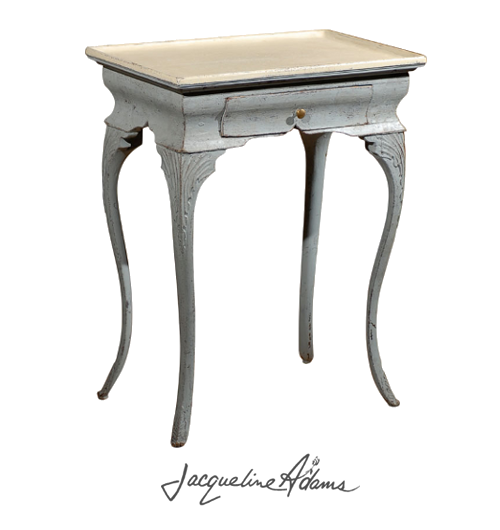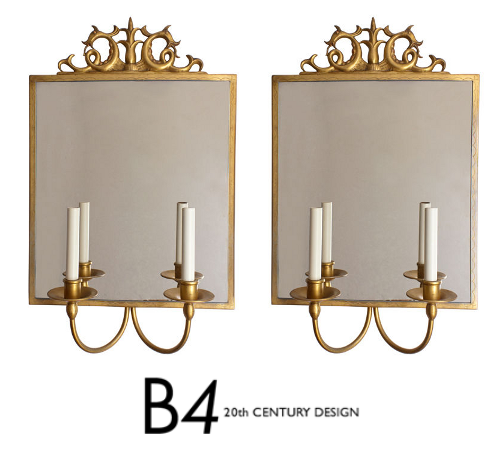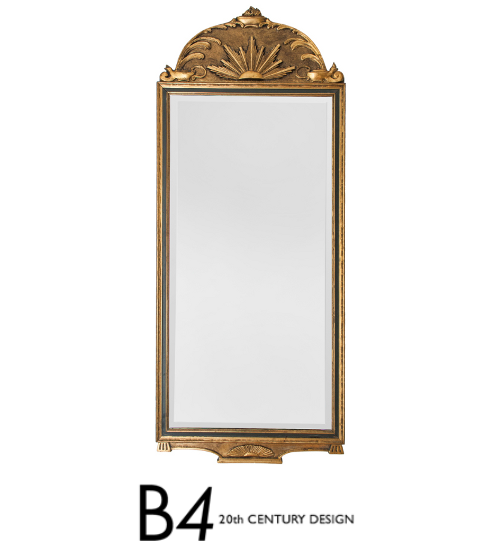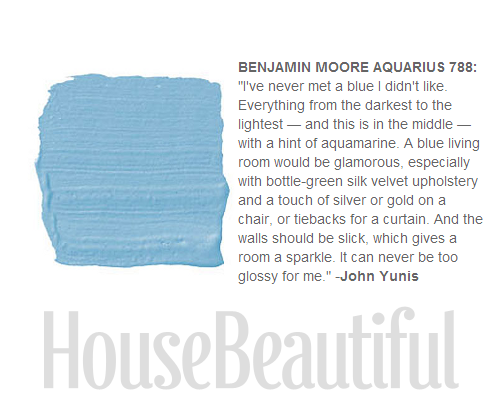Youth Kid-Size Wood Chair Blue , Gray, Black, White Add a little Nordic flavor to your child’s room, […]
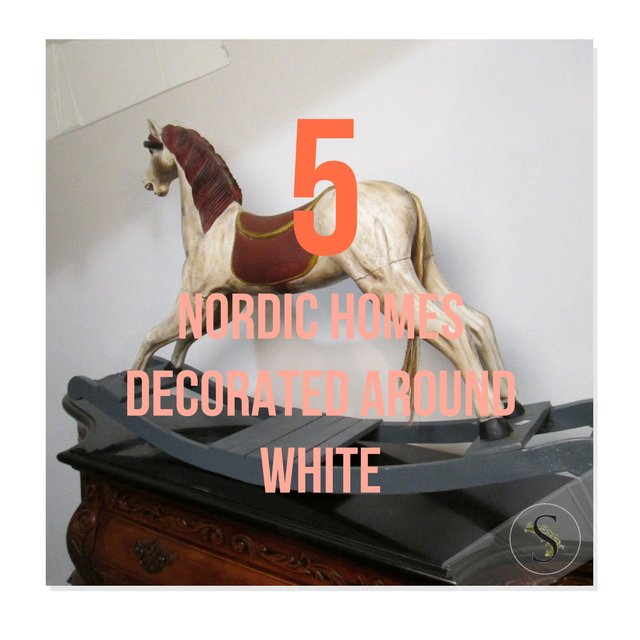
The Swedish interior decoration magazine Skona Hem had a wonderful write up on an English family who transformed their home into that of a Gustavian period style.
The home is largely based around a white palette, anchored by distressed wood floors which create a down to earth family feel. While many of us wouldn’t have access to an authentic Swedish tiled stove, we can incorporate the lines of the furniture that were seen through this time frame.
What To Look For….
– Straight Or Curvy Lines– Look for Rococo, Louis XVI furniture that has straight lines. Look for straight chests which you can add round ornate pulls, and round keyholes to. Victorian furniture also can be painted and re-upholstered to achieve that Swedish appeal.
– Mix And Match Styles– Don’t be afraid of mixing in a variety of country and formal styled furniture. You can see in this home, mixing and matching is very appealing.
– Go Authentic With Patterns- Work with country throws, and rugs to bring in the authentic patterns of Sweden.
– Wallpaper Is A Great Investment– Wallpaper can really transform a room, as seen in this home. Go for white based wallpaper with a geometrical or floral based patterns.
-Lighter Everything– Work with lighter colored fabrics, with an airy feel. Go for thinner fabrics for the summer, and collect natural based thicker wools for the winter time.
– Faux Painting and Stenciling- Create faux molding with paint. Here we frames on the walls, used in combination with stencils to give a whimsical, feminine look to the walls. As you can see, they pick a very light blue for the frames, and all the stenciling is done in a couple shades lighter and darker than the base wall colors. This look is very easy on the eyes.
– Crystal Chandeliers Everywhere– Chandeliers can really make a difference. In this home, almost every room has a crystal chandelier. Get the Swedish look by changing out your light fixtures to something more classic. It will instantly change the space.
Related Articles:
-40 Tips – How To Choose The Perfect White Paint Hersite
-Darryl Carter’s Paint Line For Benjamin Moore –Her Site
– 198 Pictures Of White Interiors –Her Site
-Stephen Shubel’s 1906 Fishermans Cottage Home in Sausalito Hersite
– 20 Seasoned Designers Reveal Their Best White Paint Shades Hersite
– Shabby Chic Decorating: Borrow Rachel Ashwell’s 3 Signature Looks –Hersite
– The White Dresser- A Website Based around All White Furniture – The White Dresser
Gripsholm Castle- Ground Floor Corridor Coutiers Wing Built 1780-82, Neoclassicism In The North If you have never been […]
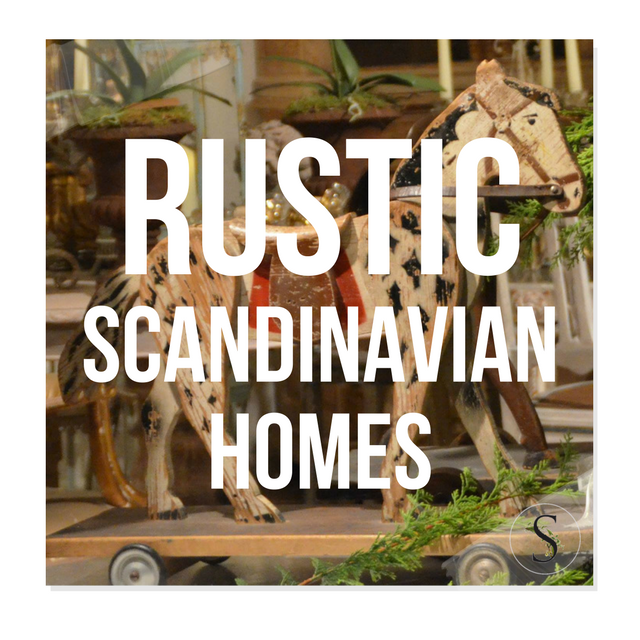
Inspiring Interiors Blog posted some terrific pictures of a barn styled home with a Scandinavian styled interior. If you are looking for a country styled look, consider how this home is set up.
Start With A Gray Palette
Starting out with gray through out your house can be a really simple way to decorate the rest of your home. To make it interesting, choose several shades of gray which you can work through your home.
For my own home, I decided that lighter colors worked well in larger rooms, while the more saturated shades could punch things up in the closets, the bathrooms, and smaller rooms.
Using gray through out your home allows your home to flow nicer than having one bright bold color in each room of the house. Later if you want to add color, simply attach a chair rail, and paint the upper half of the wall. You can add depth with accessories and wall art.
Work With Muted Shades For Country Styles
The wood walls in this home look very primitive with a gray wash. Some walls are left natural while others are painted. In one of the rooms, dried floral wreaths add a rustic touch to the walls. Here is an example of a captivating look that is inexpensive.
Helichrysum Strawflowers are one of my favorite florals. Pick flowers for drying when they are open, but not fully mature. Hang the stems upside down in a cool-well ventilated spot to dry. Avoid over-watering during the growing season, and these florals will look spectacular dried in a vase or a floral wreath.
Incorporate Red And Rust…….
Red is a classic country color that is commonly seen in the countryside of Sweden. Barns and countryside homes are painted rich reds, making it a very classic color to work with. Painting a chest of drawers or an accent chair in Falu red can really bring out the country side of Scandinavian decorating. Pair together rusty metal urns, and accessories like natural straw, hay, wicker, baskets for that country feel.
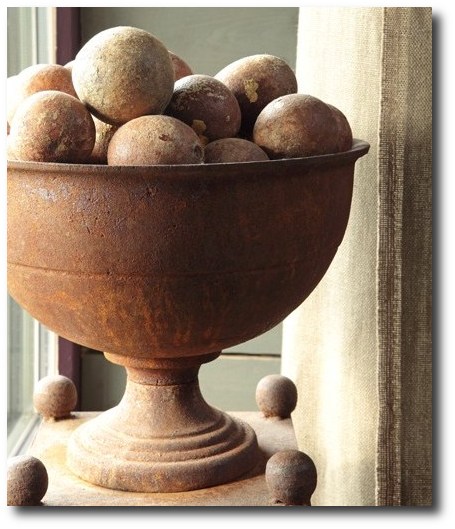
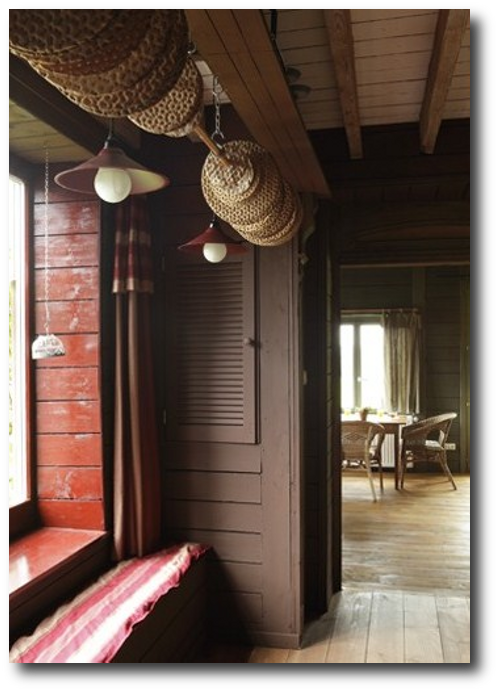 The house below was originally an eighteenth century barn which was converted into a guest house. This lovely barn is located in the village of Saint-Hilaire-sur-Helpe, in France, and pairs together both the Swedish and French rustic styles.
The house below was originally an eighteenth century barn which was converted into a guest house. This lovely barn is located in the village of Saint-Hilaire-sur-Helpe, in France, and pairs together both the Swedish and French rustic styles.
Photography by Corinne Schanté-Angel, All images from here.
 Early 19th Century Female Portrait –Maison Maison
Early 19th Century Female Portrait –Maison Maison
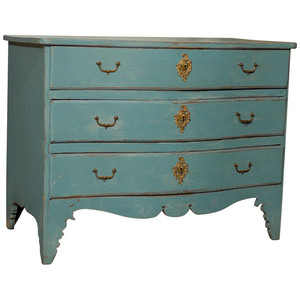 Swedish Rococo Chest-A. Tyner Antiques
Swedish Rococo Chest-A. Tyner Antiques
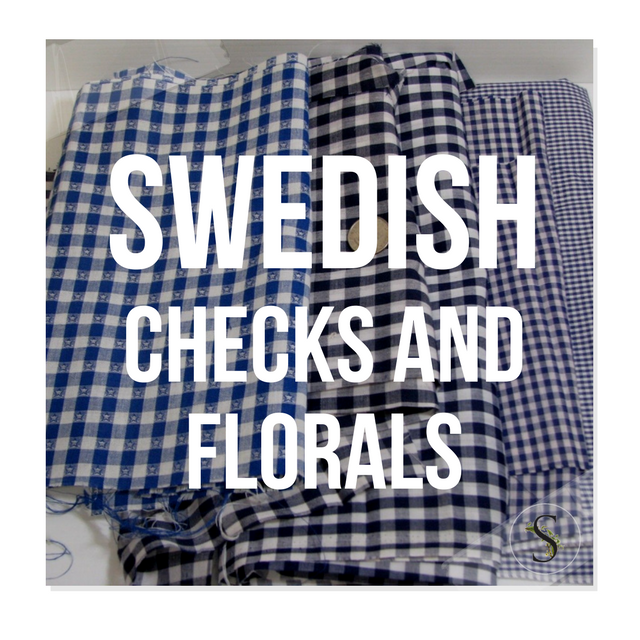
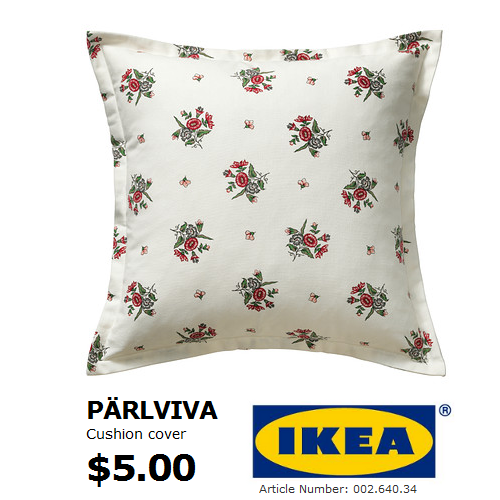 PÄRLVIVA Cushion Cover From Ikea
PÄRLVIVA Cushion Cover From Ikea
One of the easiest ways to decorate in the flavor of the Swedish style is through the use of fabrics.
My husband and I took a trip up to Canada a few weeks ago, and I had the chance to visit one of my favorite stores, Ikea. We got to Ikea around 7pm, so we didn’t have a lot of time to shop before the store closed up. I missed a few items on my list, but thankfully, most of their new and old collections are available on ebay.
In my early 20’s I had the chance to work at Ikea as a short term job though the summer, and I loved it. When I go to Ikea, I tend to look for the classic accessories that would fit into a home designed around the antique styles. Their linens, wood mirrors, bowls, glass accessories, and throw rugs are the best products at Ikea.
Their drapery, bedsheets, comforters, and pillows are always great buys. They have wonderful selection of pillow covers from year to year, which allow you to exchange out patterns in your home without having to sew, cut and assemble it yourself.
Adding florals in your home is one way to bring the garden inside. Ikea often keeps their florals and stripe fabric from year to year, giving you a really classic pattern to work with for your Swedish inspired interior. They also have a friendly mix of new updated modern looks that fit into the Swedish styled looks as well.
Quick Updates For The Summer
Change Up Your Bedroom
If you are looking to update your bedroom for the summer, buy a duvet set. If you can handle a sewing machine, buy a second set of the same pattern and add make slipcovers for your chairs or lamp shades. You could have a summer and winter look for your bedroom without spending a ton of money.
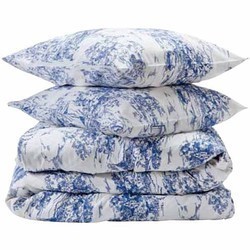 In the book “In Bringing It Home – Sweden” Author Cheryl MacLachlan gives us some really easy tips for pulling together the Swedish look in your bedroom.
In the book “In Bringing It Home – Sweden” Author Cheryl MacLachlan gives us some really easy tips for pulling together the Swedish look in your bedroom.
– She says that the classic Swedish fabrics belong to three families: Stripes, Checks and Motifs inspired by nature. You cannot go wrong with any of these three choices.
– In the finest homes, the bedrooms were fitted with hand carved poster beds or gracious carved bed-crowns. Consider buying a canopy bed, or replicate the look by hanging drapery from the ceiling using rod holders made for the ceiling.
– If you prefer the 17th and 18th century romantic bed looks, consider making your own bed crown out of wood, upholstering it, and attaching it to the wall. Match your bed linens to the fabric draperies hung from the crown to create a dramatic look for your bedroom.
– Swedish beds were distinguished by the treatment of the wood frame. The bed frames were usually carved and painted in a pale gray, or an “English red” the name for a reddish brown color.
– Select bed linens in pale shades of soft sky blues, pale yellows and grays.
-If you have an antique wood bed, consider sanding it down to it’s raw pine state. Raw pine wood is beautiful without paint.
Update Your Living Room
-A very easy way to update your living room for the spring and summer season is to purchase throw pillows. Ikea has throw pillow covers for as little as 7 dollars.
– Exchange out the heavier blankets used in the winter for lighter throws. Go for color, and pattern on your sofa.
– Don’t be afraid of colors such as pink and light blue. Pink can be pretty on a chair, or consider a print on the wall in the color tones of pink and green. Botanical prints featuring flowers can be a nice way of updating your walls in the summer. Go for a pretty pink slipcover, or bed linens.
– A nice floral centerpiece can be really captivating for the summer. I am always surprised at the quality of the florals at Michael’s crafts. Go for a large floral mix, in the colors you dream about, and build your room around it.
– Pick up a set of summer dinner plates. Adding some color to your table can really lift the spirit.
– Go flea market shopping and pick up something really bright for your interior. Consider painting a side table, or a wood accessory. A pop of color can go a long way. Go for something that really is fun, and exciting!
“ Bringing It Home – Sweden” Author Cheryl MacLachlan
In Bringing It Home – Sweden, Cheryl MacLachlan
Another look at this room from Cheryl’s book…..
NYPONROS – Queen Size Duvet Set $39 at Ikea
Swedish Checks For The Summer Found on housetohome.co.uk
Large Scale Checked Fabric- BERTA RUTA From Ikea
Finding heavy weight blue and white fabric for upholstery can be difficult. After shopping at some of the largest fabric stores, I have found Ikea to have some of the best heavy weight fabrics at reasonable price points.
After ordering several check prints on ebay and amazon, I found the number one problem, is the size of the box print to be very small, or 2, the fabric is so paper thin, that it would be difficult to upholster with. Ikea’s fabric section is limited, I find their fabrics are heavier, and cost less than most fabric stores. I have used the Berta Ruta pattern in my home for my upholstered pieces. Use some of their lighter fabrics for making slipcovers.
Find Berta Ruta in Red, Navy, Black and Beige – At Ikea
White Lacquer Finish Round Accent Table $321 From Overstock On Ebay 17th and 18th century furniture is still […]

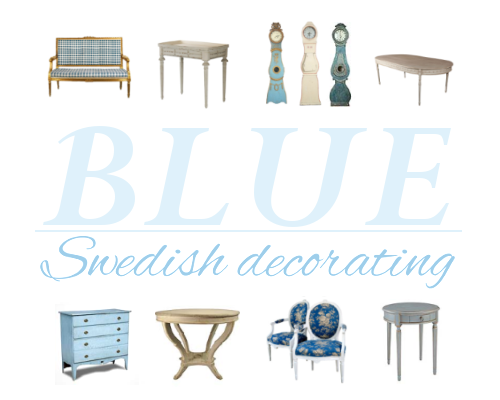 There are so many shades of blue, which one do you pick? Swedish decorating is known for their partiality towards the color blue. Blue is one of the staple colors in 18th Swedish century decorating, so if you plan on decorating with this style, we can give you a few ways to incorporate the color blue into your design scheme.
There are so many shades of blue, which one do you pick? Swedish decorating is known for their partiality towards the color blue. Blue is one of the staple colors in 18th Swedish century decorating, so if you plan on decorating with this style, we can give you a few ways to incorporate the color blue into your design scheme.
First decide if you want a formal or country appearance in your home. Knowing which look you are attracted to can help determine accessories, furniture, drapery and wall treatments.
1. Formal Blue Interiors – Blue-gray, painted finishes became popular after King Gustav ruled in 1772, and since then they still remain fashionable.
Formal Swedish Tips- Line Furniture Up Against The Wall- This is a classic Swedish touch that can give the look of finer living. If you have a room where you can line a set of three chairs against the wall, or a pair of chairs and a accent table, this will always give your room that refined, superior Swedish appearance. Push your furniture in the middle of the room, and if you have a tv, consider hanging it on the wall. I find that this arrangement always gives the look of more space. You can never have too many chairs. Collect furniture that have fluted legs, such as side tables, benches, or chairs.
Formal Swedish Tips- Buy A Long Oval Table – Here is a Henredon oval table selling on ebay for just over $1000. Strip off the finish and paint it gray. A long, dining table echoes the simple curves of early Gustavian style. Dress up your furniture in light, greenish blue-gray paint finishes to get the high end looks found in the Swedish castles. Consider investing in a crystal chandelier, which coordinates with white or really pale blue or pastel walls and work with white upholstery. Squared picture moldings, and sconces really can add to this formal Swedish appearance. Consider stenciling your walls with green-blue leaf patterns along the inner edges of the walls, and collect old styled portrait oil paintings with dark grounds which give rooms a dark accent.
Formal Swedish Tips- Go For Gold Accents– Dress up your furniture with furniture appliques and ormolu mounts. You can make any picture frame seem so much more expensive by adding gold leaf. Gold leaf is really simple to apply. Follow this link, and I show you where I buy my gold leaf on ebay. Buy a sconce and gold leaf it. Get ideas from this post, where I wrote about the sconces that are the most sought after from collectors world wide. A thin rectangular mirror on ebay can be a great look, which you can then add on a brass candle holder. This DIY project will give you the Swedish look for less.
– Decorative Mirror Molding, French White Bow- $21 Buy it on ebay
– Decorative Scrolls For Mirrors, and Dressers – $40 Buy it on ebay
– Ribbon Bows Mold, Decorate Mirrors and Furniture- $13 Buy it on ebay
-Ormolu French Gilded Furniture Ribbon Large- $35 Buy it on ebay
Louis XV Antique GILT WOOD handcrafted CARTEL WALL CLOCK estimated $1200- buy it for $350, buy it on ebay
Antique Gilt Wood Cartel Clock $450 on ebay– buy it on ebay
– Formal Swedish Tips- Go Brighter With Bright Blue and White- Go for a home that has white accessories and upholstery. Don’t be afraid to go with bolder blues for drapery, upholstery and bed linens. Brighter blues look great in formal settings.
-20 Yard Bolt – 44/45″ White Polycotton Liberty BROADCLOTH- $61 Buy it on ebay
– Solid Poly Cotton Fabric In Bright Blue – Buy it on ebay
-Fabric By The Bolt – 40 YARD BOLT $190 on ebay- Buy it on ebay
-Sunbrella Canvas Air Blue Outdoor Fabric $21 dollars a yard- Buy it on ebay
Cane Back Cushioned Seat Side Wood Chair Fluted Distressed Hammered Nailheads
(Paint it gray, white, blue or what ever colors you are working with. Great frame, great price)
Another great Empire looking Swedish styled chair. Again, the frame would look terrific in a light gray or blue with a white upholstery. This chair sells for $665 on ebay
Here is another great accent chair, get two of these and pair it with a sofa. It is already painted white, and the white upholstery makes this chair look upscale. This chair sells at $719, which includes the shipping on ebay
Swedish Country Rustic Styles
2. Country Keys- Rustic Architecture – Country Swedish style is beautiful and worn. The countryside contains a mixture of rustic elements. Go shopping in architectural salvage yards and collect things that are worn. Wood is the key to getting the look. An old wooden door can be replaced by those builder typical doors you see in new homes. A old ladder can lean against the wall. Paint it in a darker blue and distress the heck out of it. Ceiling beams in their natural wood give an architectural feel to a home. Add some faux hallow wood beams across your ceiling. Get the look without having to hire 5 strong men to anchor it in place. Work with light wood flooring, and natural materials.
–Country Keys- Country Textiles- Skirted sofas, slipcovers in natural blends and textured walls are classic marks of styles found off the beaten path in Sweden. Ebay sells a number of Restoration Hardware’s stone washed Belgian Linen products new in their packages. You can buy new pleated drapes on ebay, along with bedding, pillow cases and more for half the cost in the stores. Raw and natural textures are the key to this look. I ordered this heavy oatmeal linen
for several of my drum lamp shades which I am re-covering. The material is heavy, and would be terrific for upholstery.
– Heavily distressed Mora clocks such as these on ebay, give your room that traditional Swedish look.
– Warm Old Barn Finish Table (paint it, and change the color) – $229 Buy it on ebay
– Reclaimed Salvaged Fir End Side Table- $564 on ebay here
– Country Keys – Go For Color On The Rustic Side– Muddy shades of blue work with the country styles. If you like the lighter shades of baby blue, distress your furniture more than you normally would. This certainly helps when the furniture’s wood is raw and stripped. The paint will blend nicely with the raw woods surface giving you a more authentic appearance. For complementary shades, pair blue with orange-red accents, along with shades of green-blues. Gingham upholstery also looks terrific in a country home, along with florals. Work with carvings, such as art that can be hung on the wall, and accessories that are carved such as standing wood birds which are painted and made from wood. Dala folk horse carvings are a Swedish country favorite. Pillows with embroidered blue-and-white folk patterns nicely work in a country home. Think about hand crafts, such as hand embroidered artwork, quilts, delft fireplace tiles, over-sized ginger jars, and colored glass.
Restoration Hardware Shower Curtains
Carved Mango Wood Accent Table Mindi Veneer Hand Finish Robin’s Egg Blue, this table sells for $229 on ebay Buy it on ebay
Swedish Period Gustavian Secretaire £3400.00 (approx $5490 / €4013) www.dlarssoninterior.com Scandinavian 18th and 19th C antiques have been […]
D.Larsson Interiör & Antikhandel I recently was able to interview Daniel Larsson, owner of D.Larsson Interiör & Antikhandel, […]

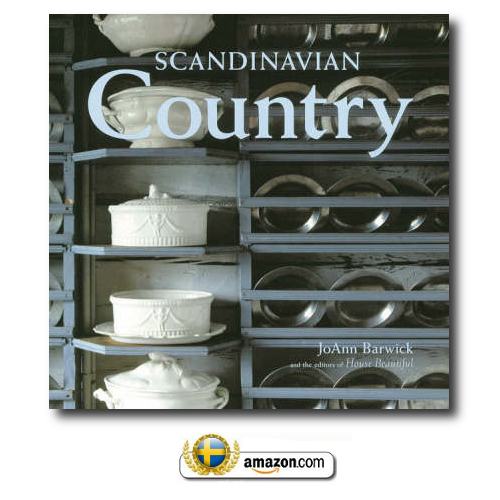
Of all the European country home styles, none is more universally popular than Scandinavian Country. These fresh, light-filled northern interiors have an effortless grace that never fails to delight the eye.
JoAnn Barwick and the editors of House Beautiful lead us on a tour of more than twenty exceptional residences in Sweden, Norway, Denmark and Finland that show this immensely appealing look at its very best.
These interiors are both steeped in tradition and utterly contemporary. Scandinavians have a passion for color and an abiding reverence for nature: stippled, spattered and even faux-marble painted finishes enliven even the most humble country furniture; and an abundance of rich woods, crisp tiles and robust textiles embody the pleasures of natural materials.
With nearly 300 full-color photographs and an extensive directory of sources for Scandinavian furnishings and accessories, this engrossing and seductive book encapsulates this most inviting of country styles.
JoAnn Barwick was editor-in-chief of House Beautiful magazine for more than a decade, and is acknowledged as a pioneer in the development of American and international country style. She was the founding editor of Country Living magazine and has been an editor at Good Housekeeping and Modern Bride.
Norma Skurka is the former Home editor of the Sunday New York Times Magazine. She has taught at Parsons School of Design, lectured at the Cooper-Hewitt Museum, and is the author of several books, including The New York Times Book of Interior Design and Decoration.
Scandinavian Country by , JoAnn Barwick On AMAZON
Scandinavian Country by , JoAnn Barwick On Ebay

 Cannot get enough of gray furniture, Nordic style decorating and the lush interiors of Gustav III? Pinterest can be your best friend when it comes to ideas for re-decorating, painting, and inspiration to get your creative juices flowing in the morning. There are hundreds of pages that have to do with themes of the Nordic Heritage. From decorating, to cultural costumes, to travel ideas; pinterest is rich with ideas.
Cannot get enough of gray furniture, Nordic style decorating and the lush interiors of Gustav III? Pinterest can be your best friend when it comes to ideas for re-decorating, painting, and inspiration to get your creative juices flowing in the morning. There are hundreds of pages that have to do with themes of the Nordic Heritage. From decorating, to cultural costumes, to travel ideas; pinterest is rich with ideas.
Here are 75 Pinerest pages that have to do with all things Nordic. Follow these pinterest pages I have listed, and if YOU have a page that fits with the Nordic theme that we haven’t listed, PLEASE leave a comment below in the facebook comments section, or regular comments section with a link to your page. Share the love people! You might discover a new friend.
So here we go:
1. Furniture: Gustavian – Meranda Devan here
2. Interior Design: Nordic – Meranda Devan – here
3. Interior Design: Swedish Meranda Devan –here
4. Poutres Blanches- Anne Magnier – Here
5. Jeanne d’Arc Living Magazine Photos- Here
6. Swede Blog- Swedish Antiques- Here
7. Nordic Style From White Lace Cottage- Here
8. Gustavian Style and Inspiration Kristin Fägerskjöld- Here
9. How Swede I am- Judy English- Here
10 Sweden – WP- Daily Themes Group Board- Here
11. Beautiful Pins From antiqbr.blogspot.com here
12 Marie Antoinette Vanna H- Here
13 Day Bed Love Jane Love Here
14 French & Belgian- Anna Tausend- Here
15. Swedens Red Houses Kristin Fägerskjöld- Here
16 Scandinavian Themes -Susanna Nykänen Here
17. Interiors Gustavian Cornélie Polderman –Here
18. Norwegian heritage, foods, crafts Bette Calderone Here
19. Mäster Henriks Blog Kristin Fägerskjöld- Here
20. La Maison de Mes Rêves- Hanna H Here
Bogstad Manor In Norway Bogstad Manor is a protected cultural monument and one of the few country estates […]

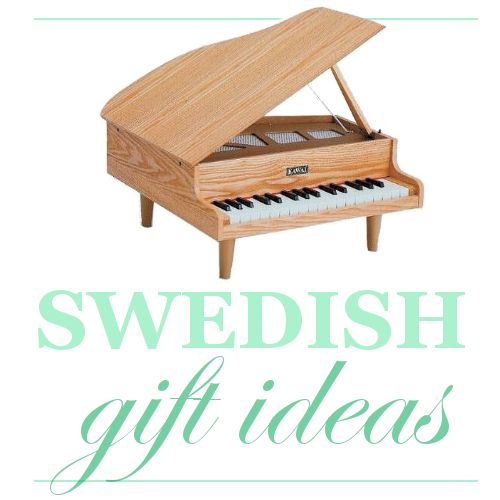 KAWAI grand piano $168 Amazon
KAWAI grand piano $168 Amazon
Are you interested in buying something different than the typical gifts found in the big box stores? Scandinavian style gifts come with a taste of heritage and family traditions passed down through generations. Below we list a selection of gifts that are inspired from Norway, Sweden, Denmark, Finland, and Iceland.
1. Consider buying a Dale Of Norway Sweater – Dale of Norway is a world leading designer and manufacturer of premium knitwear, and is available on Amazon All of its garments are knitted at Dale, a small village by the west coast of Norway, located between beautiful steep mountains, waterfalls and fjords. The company was established in 1879, and has since then developed many innovative yarns and knitting techniques, creating beautiful designs made of 100% pure, high-quality wool.
2. Make Your Own Norwegian Mittens and Gloves: Over 25 Classic Designs for Warm Fingers and Stylish Hands by Annemor Sundbo This gorgeous collection showcases traditional Norwegian mitten and glove patterns, providing an accessible format for new and old lovers of knitting. Presenting a beautiful selection of 29 classic figurative concepts, this array is a fashionable representation of Norway’s history of the craft. Used From $12
3. Create Your Own Nordic Gifts: 35 Projects Inspired by Scandinavian Style by Mia Underwood – Add a touch of Scandinavia to your home and your wardrobe. Scandinavian style has never been more desirable, with its emphasis on natural materials, light and fresh colors, and classic motifs. Mia Underwood inherited her love of making things from her Danish grandmother, and she understands both the techniques and the heritage of crafts from Scandinavia. In Nordic Crafts she presents 35 new projects which reflect the traditions of the Scandinavian countries, with a modern twist. Projects for the home include a novel bread basket, and a gorgeous bird mobile. For a child’s room, there is a beautiful baby blanket, and a woodland scene to hang in the window. For playtime, felt animal masks will fire your child’s imagination, while nisse – mischievous elves – are easy to make from scraps of wool. The Danish love of coziness and comfort – ‘hygge’ – is reflected in patterns for felted slippers, embroidered mittens, and snoods for both adults and children. Buy New from $16
4. Can You Knit? Make Traditional Scandinavian Knitting Gifts (Dover Knitting, Crochet, Tatting, Lace) by Sheila McGregor lassic guide to the styles of Norway, Sweden, Denmark, Iceland, and the Faeroe Islands. Vibrant patterns for an array of garments include jerseys, gloves and mittens, stockings, and caps. Illustrated with 191 black-and-white and 20 color pictures, this volume is well known and prized among longtime practitioners of the craft.- Buy Used From $5
5. Our Nordic Heritage Ingalill Snitt-Our Nordic Heritage presents the 18 sites in the Nordic countries which have been inscribed on UNESCO’s World Heritage List – the cultural and natural heritage of mankind. Areas with this status represent outstanding and irreplaceable cultural and natural treasures. They are important to us as sources of experience and understanding of our manifold historical, cultural and natural background. Buy It Used From Amazon $18
6- Gifts For Little Girls- Scandinavian Girl and Boy Paper Dolls (Dover Paper Dolls) by Kathy Allert and Paper Dolls (Aug 17, 1993) Two dolls, 32 traditional, accurately detailed folk costumes. Full-color renderings of a Norwegian bridal ensemble, Finnish Lapp outfits with colorful “four winds” hats, Swedish Lapp summer garments, Danish bridal apparel with a floral crown, an Icelandic folk-dancing costume, and more. Includes map showing countries and regions represented – Buy Used From $1
7. Have a Baker In The Family? Or Consider Baking Scandinavian Style. Scandinavian Classic Baking by Pat Sinclair and Joel Butkowski- Shows you how to do Scandinavian coffee breads and cakes to cookies and tarts. This gorgeous cookbook offers forty-three recipes, along with photographs, history, musings, and stories. Buy it new from $13 on Amazon
8. Make Something Out Of Paper For A Gift– Norigami: The Art of Norwegian Paper Folding by John Roth Buy Used From $2
9. Classic HOW To Nordic Needlework-Scandinavian Needlecraft: 35 Step-by-step Projects to Create the Scandinavian Home by Clare Youngs and Sarah Hoggett – Incorporating the finest elements of Scandinavian crafting traditions, inspiration is taken from a range of backgrounds including classic folk art and local needlework, as well as more contemporary sources. These delightful designs, each with clear step-by-step instructions and beautiful photography, will have you itching to get stitching. Buy used from $5
10. Swedish Cooking Guides – In Kitchen of Light readers are transported to Viestad’s Norway—fishing for cod, halibut, and salmon; gathering chanterelles, porcini, and wild berries. More than 100 recipes emphasize fresh, simple ingredients in delicious and elegant dishes such as Pepper-Grilled Oysters and Scallops and Roast Dill-Scented Chicken with Leeks and Potatoes. This inspired cookbook, a companion to the public television series New Scandinavian Cooking, is perfect for home cooks, armchair travelers, cultural food enthusiasts, and anyone who yearns for the simple life. New From $17 on Amazon
11. The Knitter’s Directory 150 Scandinavian Motifs is an inspirational collection of favorite motifs found in the traditional knitting of Norway, Sweden, Denmark, Iceland, and the Faeroe Islands. New From $16 on Amazon
12. Embroidery Books- Scandinavian Stitch Craft: Unique Projects and Patterns for Inspired Embroidery – Highlighting traditional Swedish embroidery techniques and featuring easy instruction, Scandinavian Stitch Craft will be an inspiration to modern crafters. Through thirty inspiring projects, Holmberg highlights many of Sweden’s traditional embroidery stitches and uses them in new and exciting combinations. The projects can be used to make new buys more personal, to embroider clothes that you already have in your wardrobe, or to brighten up a flea-market bargain. Also included is information about materials used, tips and tricks, descriptions of the various stitches, and removable pattern templates which can be used to create your own works. Buy it new from $15, Used from $11 on Amazon
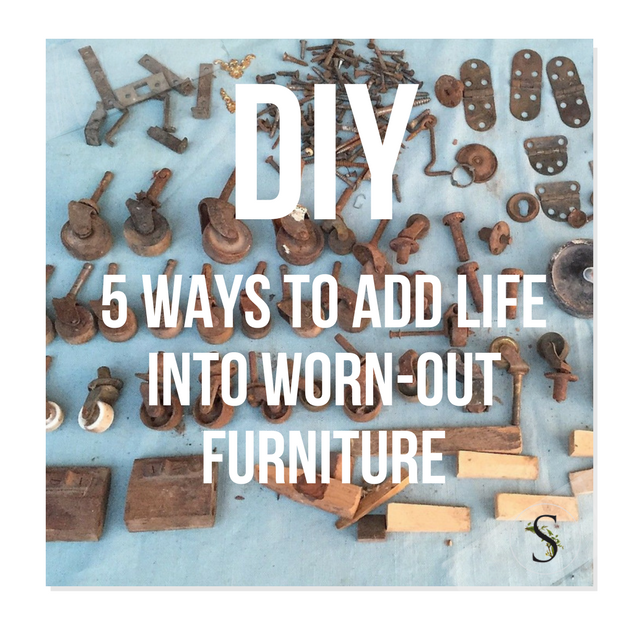
Colefax and Fowler
Furniture ages just like everything else…and like with most other things, you don’t notice the small changes that happen to your furniture until one day, a few years (or maybe even a decade or more) down the line, you stop and say, “When did my furniture develop this natural patina?”
Obviously you love your furniture — you wouldn’t have kept it for so long if you didn’t — but loving your furniture doesn’t mean you can’t update it or dress it up a little. What’s more, you can make your updates and do your dressing up for very little cost (which should be a relief since it’s doubtful you’ve got a Steve Wynn-sized bank account to fund these projects).
Here are a few cost-effective ways to do just that.
1. Put on New Hardware
Consider adding a little bit of bling to that old chest that you want to fall back in love with. Putting on new hardware is a great way to dress up old cabinetry and furniture. For example, maybe instead of having handles on the dresser drawers, you can put pulls on instead. New hardware can completely change (and update) the look of a piece and costs way less than buying a whole new item.
2. Refinish It
That chest sitting in the back of the garage may look nice in it’s all natural elements. Consider sanding off the old layers of varnish and finish. Maybe this time you can choose a different paint color, or maybe you’ll leave it all-natural.
Refinishing vintage furniture helps get rid of layers of gunk and grime. It can also remove dings and scratches that might have dampened the appearance of the piece. While it won’t often make the piece look brand new, it can help it look re-energized.
3. Paint
As someone who is undoubtedly into the purity of his or her furniture, the idea of painting over the current finish, stain, or varnish probably turns your stomach. Before you hurl, though, know that light paint colors are very “in” right now (and has been for a while). You don’t have to paint the furniture a garish color if you don’t want to. In fact, one of the best things you can do is paint it white. A coat of white paint helps it keep its integrity while also updating its look.
4. Reupholster It
The simple fact of the matter is that over time, fabric (in spite of your good intentions and good care) starts to rot. Cushions (even with minimal pressure) lose their strength. Reupholstering the seat, sofa, or stool helps maintain its beauty and structural integrity. You can even find antique-looking fabrics fairly cheaply online. Even better — upholstery is something you can easily do yourself, which saves you even more money!
Whatever you choose to do, know this: Updating is not the same as replacing. You can keep the same furniture for decades if you treat it well and give it a facelift now and then!
Erin Steiner is a full-time freelance writer and web content creator.
Table With 4 Chairs- Live Auctioneers
Table With 8 Chairs- Live Auctioneers
Riverhills Game Room- Texas designer Joe Minton sought to create a space that would be well-used. Accordingly, he selected a durable outdoor fabric for the banquette. Its yellow-and-blue, slightly nautical stripe adds playfulness to a room rich in antiques.
Picture Credit Scandinavian Antiques Co On Ebay 1800s White Folk Art decorated Antique Swedish Mora Clock From Swedish […]
Carl von Linnaeus home, Hammarby 18th century Swedish Today Linnaeus’ Hammarby is one of Sweden’s most accurately preserved […]
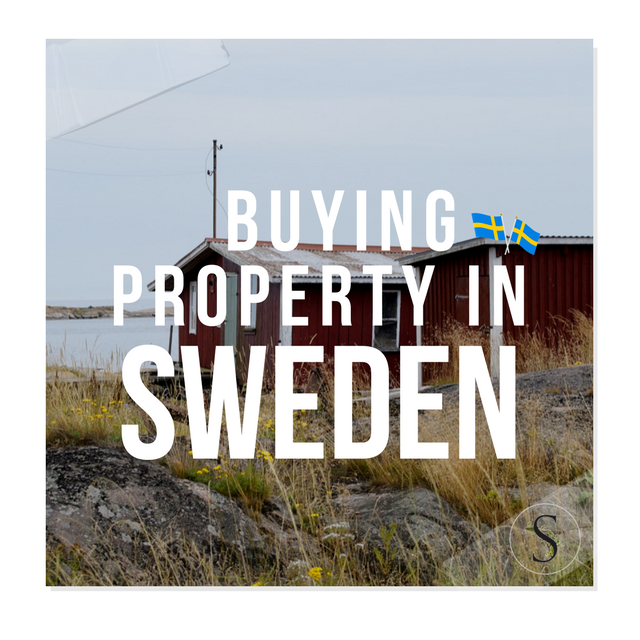
Gård & Torp Magazine
Have you ever considered buying or renting a home in Sweden? The prices for a cottage in the country are surprisingly affordable. Expert Home Design Blog details the costs of real estate in Sweden:
Sweden is the largest country in Scandinavia and the fourth largest in Europe, bordering Norway and Finland, within the Arctic Circle. Sweden has large numbers of newly built properties, with over 50% of apartment homes being built since 1960 with the majority being mainly rented. Freehold individual properties are largely owner occupied. Official language is Swedish with a minority understanding Finnish.English is widely spoken. Capital gains should not be charged for the sale of privately owned property.
There are no restrictions on Foreign Ownership.
Property and Real Estate Prices in Sweden
Range Varies, for example:
From around £25,000 / $37,000 for a single family home
From around £25,000 / $37,000 for an apartment
From around £40,000 / $60,000 for a villa
From around £50,000 / $75,000 for a bungalow
From around £85,000 / $125,000 for city homes
Country homes vary from around £150,000 / $225,000
Locations to buy real estate and property in Sweden Stockholm being Sweden’s capital is popular and including the suburbs represents about 20% of Sweden’s total population and with the growth of financial and technical companies around Stockholm this will likely grow. It is situated on the Baltic Sea, at the entrance to Lake Malaren and is built on 14 islands with many exceptional waterside buildings.
Gothenburg, Sweden’s second largest city on the West Coast of the country is a major port and industrial center. Malmo, on the south coast is expected to grow significantly over the next few years following the completion of the 16 km bridge and tunnel linking to Copenhagen in Denmark.
Living Costs in Sweden
Sweden has enviable living standards supported by high tech capitalism and extensive welfare benefits.
Buying property and real estate in Sweden
It is usual for a Real Estate Agent to be used for buying and selling of property in Sweden. They will handle the necessary paperwork and communicate buying and selling prices with all parties involved. It is not contractual to have your property valued but fairly common for buyers to hire independent surveyors. When you have satisfied any questions in respect of your purchase a completion date can be agreed through your Real Estate Agent. It is the responsibility of the buyer to apply for deeds of title within three months of the sale transfer and submit for registration.
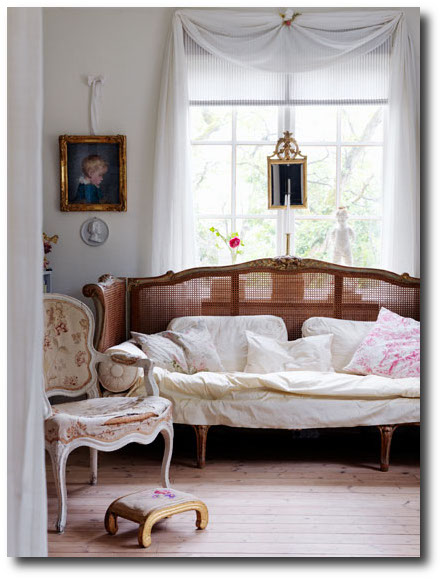 Carolina Romare is a Swedish freelance photographer. After three years in Melbourne, Australia and a Bachelor of Arts in commercial photography from RMIT University, she decided to move her business back home and is currently based in Malmö, Sweden.
Carolina Romare is a Swedish freelance photographer. After three years in Melbourne, Australia and a Bachelor of Arts in commercial photography from RMIT University, she decided to move her business back home and is currently based in Malmö, Sweden.
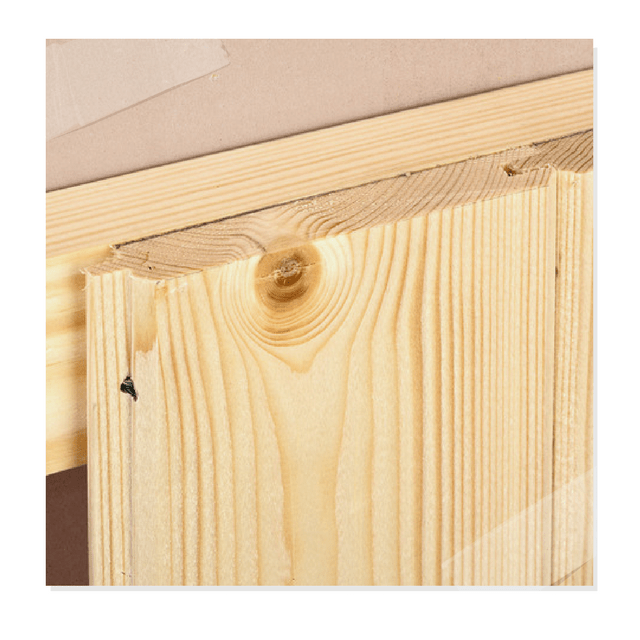
How to Install Tongue-and-Groove Paneling
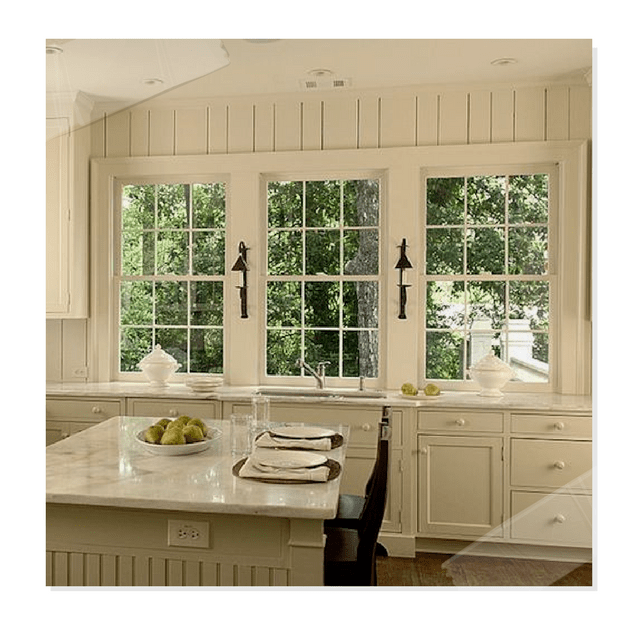
Beadboard Kitchen Island Cottage kitchen Litchfield Designs
This wonderful picture was taken From House to Home
Tongue and groove paneling is a great alternative to drywall for a home which is decorated around the Scandinavian style. These wood panels are inexpensive, and easy to install. All that is needed is a good nailing gun, wood glue, and a good miter saw, and this weekend project can radically transform any room in your home. These planks of wood are quite thin, making them lightweight, practical solution for walls and ceilings.
The tongue and groove features of the wood make it really easy to put together, and with a surprisingly quick turn around time. The installation of tongue and groove paneling, compared to drywall, (which requires taping, mudding and sanding) is easier, cleaner and takes less time.
Installation Steps
1. Calculate How Much Wood You Will Need
Calculate the amount of paneling that you need. Amazon offers free shipping right to your door, making it easier if you don’t have a truck to transport the wood.
Determine if you want to do the whole wall, or half the wall. Consider changing up your trim. You can add layer on your trim to make it appear more bulky and architectural. In the House to Home picture above, you can see the floor trim is built up giving it more of a presence in this room. Calculate the amount of wood by simply measuring the length and height of each wall, and multiply the height times length to get square footage.
Tools and Wood
-Allwood V-Groove Knotty Pine Planking, 70 SQF Thickness: 5/16″, Width: 3-1/2″, Length: 96″ Package: 70 SQF (5 mini bundles x 14SQF) $110 + Free Shipping on Amazon
– Optional Buy For Walls of Half Pine Planking and half wallpaper – Allwood Wainscot Base and Chair Moulding, Thickness: 9/16″, Width: 2-5/8″, Length: 96″ $13.60 + Free Shipping on Amazon
-Henkel Power Grab All-Purpose Construction Adhesive (Recommended for molding, paneling, chair rails, plaster, concrete) $17 +$7 Shipping Amazon,or add on item for $4 with Free Shipping
– A Miter Saw – Buy re-conditioned saws on Amazon from $45 dollars
– A Nailing Gun and Compressor Combo. Money worth spent.
– Senco PC0947 18-Gauge Brad Nailer Compressor Combo Kit $179 +Free Shipping Amazon
– Porter-Cable 6-Gal. Portable Electric Air Compressor and Finish Nailer $199 + Free Shipping Home Depot
 1st picture, white painted paneling shown in a bedroom, designer unknown, 2nd picture, Santa Monica home designed by Tim Barber Ltd. Architecture
1st picture, white painted paneling shown in a bedroom, designer unknown, 2nd picture, Santa Monica home designed by Tim Barber Ltd. Architecture
2. Remove The Existing Trim
-Before you start installing the wood paneling to the wall, remove the existing trim by using a hammer or pry bar. Be careful with your trim, so you can put it back into place once your wood paneling is up on the walls.
-Locating the wall studs and ceiling joists is a good starting point. Mark them out on the wall using a stud finder. This can be a tricky part of the job, but well worth your time. Decide how you would like to install the paneling. You can either run the planks vertically or horizontal to the wall. As you put up the wood planks, nail them right into the 2 x 4 studs.
3. When installing the paneling to the wall, leaving a gap of 1 /2″ at the edges for expansion. Start installing the plank with groove closest to the wall, and secure the first row by nailing into the stud. Insert the nails into the tongue at an angle and use enough force to have the nail flush with the surface of the tongue. If this is done properly, the groove of the next board should slide easily over the nails on the tongue of your previous plank.

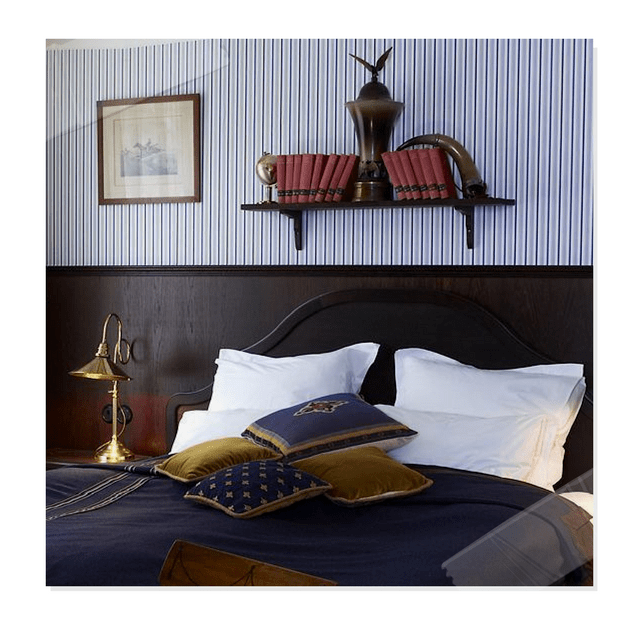
$11M Stockholm Palace is Made for ….Curbed
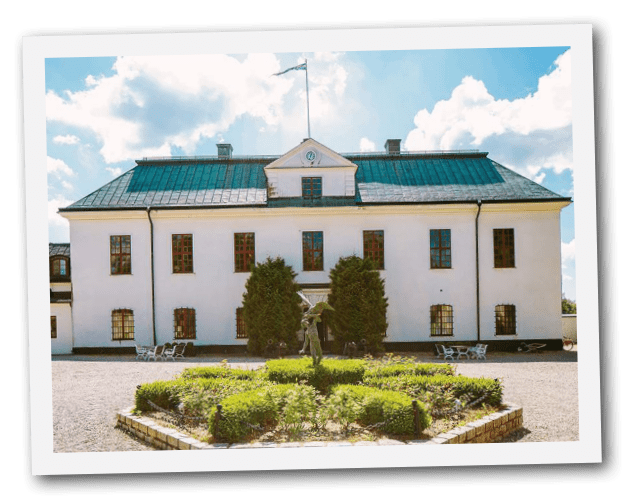
$11M Stockholm Palace is Made for ….Curbed
Häringe Castle- mogi.metromode.se
If you want to explore near Stockholm Sweden, consider visiting the Palace-turned-hotel Häringe Castle. This stunning 17th-century baroque castle- hotel just 45 miles outside Stockholm is located near a nature reserve. Historic lore suggests that Vikings first claimed the Häringe Peninsula as property in the 11th century. The estate has belonged to many famous people as King Gustav Vasa, Gustavus Horn, and Axel Wenner-Gren. Häringe was a ship yard during the time of King Gustav Vasa and probably even earlier. Häringe manor consists of the castle garden and park facilities, farm buildings, staff quarters, the farms and active farmland. Häringe is a very important link to the City’s history, and is a national tourist destination.
The main building was originally built in 1657 by Field Marshal Gustav Horn. The south wing was built slightly earlier when the castle was built. The castle got its present appearance at a major refurbishment in 1770. Häringe sat as an estate from about 1770 until 1929, when it was bought by the newspaper man Torsten Kreuger. Kreugar added the landscaping and the swimming pool.
After Kreuger, Häringe was bought in 1934 by business and industrialist Axel Wenner-Gren and founder of Electrolux. He filled the mansion with expensive furniture, and it was said he also built the road leading up to the estate. The Wenner-Gren had Häringe many famous guests like Greta Garbo, Danny Kaye, Karl Gerhard. At one point, all the furnishings were sold by one owner, only to be researched and re-purchased by another one years later. After Wenner-Gren’s death in 1961, the lavish furnishings disappeared. The new owner, crab importer Olle Hartwig, pored over Wenner-Gren’s photo albums, and was able to re-purchase most of the items.
Häringe castle is located in open countryside between Landfjärden and Bobäcken. Häringe estate was in the early 1900s, one of the largest in the county. The manor house, which has its origins in the mid-1600s, is today a whitewashed two-story building with mansard roof. It has separate wings on both the north and south side. On the south side there is a large swimming pool and remnants of very old trees. Beyond the grandeur interior, the property lead the way to feature Sweden’s first outdoor pool with a slide from the second floor bathroom, as well as a bowling alley and underground tunnels.
North and east of the castle are a dozen red-painted farm buildings of different ages, which at one time meet the housing needs of the property. These are dominated by a large barn from 1946. On the castle’s west side are the remains of a garden with statues from the Wenner-Gren at the Castle (1934-1961).
There is also a nature reserve south of the property called the Häringe-Hammersta. The land in the nature reserve owned by the Archipelago Foundation. The land immediately surrounding the castle is privately owned. Today the palace is used for conferences, as hotel accommodation. This castle turned hotel is owned by the Ljungberg family since 1999 and is part of an exclusive hotel chain.
Information gathered from Haninge.se
- Website: Häringe Palace
- E-mail: info@haringeslott.se
Additional Links:
– A Bridal Party At Häringe Castle – 2bridesphotography.com
– Most interesting pictures tagged “häringeslott” on Flick River
– An Enchanted Castle in Sweden –remodelista.com
– An Enchanted Garden in Sweden- www.gardenista.com
– Sweden’s most haunted castle: Häringe – Network Europe
– A night at Haringe Palace –Live Like You

Take a trip back in time to Carl Larsson’s turn-of-the-century romanticism by dining and taking in a breath of fresh air of all things Swedish at the Wreta Gestgifveri Inn. Lose yourself in the romance of the 17th century baroque period, and forget the tv, work, and stresses of this day.
When Owner Jim Grundstrom, one of Sweden’s most accomplished interior designers, first saw the seventeenth century building, it was empty, and lacked any sort of style. Seeing beyond the battered interior, he saw the potential of restoring it back to it’s orginal form and opening it up as a boutique country hotel. This hotel gives you the choice of several different styled rooms, ranging from Gustavian, Empire and rustic folk art.
Around The Area
Only 20 minutes out of Stockholm is the Högberga farm and a magnificent view over the water. In about an hour you will find Rånäs Castle, Ulvhälls Estate and Wreta Gestgifveri.
1.5 hours north reaches you Gimo Estate in Northern Roslagen and Söderforsgatan Mansion at Dalälvens beach. Hotels Havsbaden, Chub Estate and Söderköpings Brunn are all two hours away.
The Upper Floor In The Main Building:
The Mamsells Kammare room is one of the oldest rooms in the guesthouse, showing off a country feel with a touch of red. The Kuskens Kammare is another old room, and may have been one of the rooms where the coachmen stayed. The von Fersens Kabinett room, has an elegant feel, and was inspired by the late 18th century frequent guests, Axel von Fersenis. The Bernadotterummet Room is a room decorated around the true Empire style, named after Crown Prince Karl Johan Bernadotte’s visit to Wreta in 1816.
The Gustavianska Gemaket room is a late-Gustavian-style room looking out over the apple orchard. The Hårlemanska Gemaket Room is named after the castle architect Carl Hårleman, who was a frequent guest at Wreta in olden times. The Kolonialrummet Room is an example of how the Swedish East India Company’s journeys to Southeast Asia influenced some Swedish manor houses. The Gestgifverisviten Room is where he Gustavian meets the Empire style. A warm welcome awaits you in this bedroom and lounge.
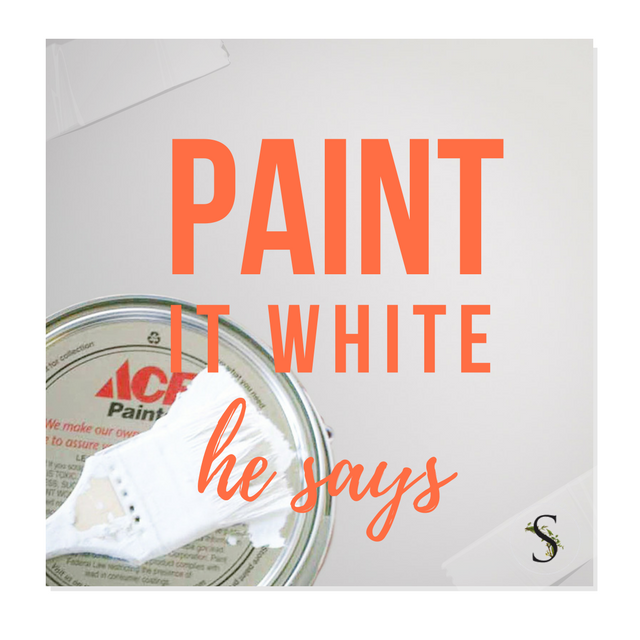
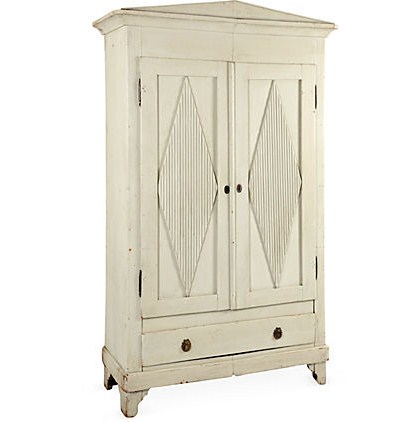 Darryl Carter on One Kings Lane- Swedish Armoire
Darryl Carter on One Kings Lane- Swedish Armoire
Washington, D.C., interior designer Darryl Carter certainly has made a memorable mark on the color white. Fifteen years ago he had a busy career as a lawyer when he decided to change course and open his own interior-design firm. He made a name for himself by transforming rooms that were grounded in a neutral palettes with an appreciation for showcasing art and antiques. Swedish interiors have always been known for their white based interiors. In an interview by Veranda, designer Darryl Carter gives his best tips for using the color white in your home.
1. Pick Your Paint First
“It’s not a cop out,” he insists. “It’s a way to harmonize a house in its entirety.” Once you’ve chosen your paint, select textiles next—preferably a hue that closely matches the walls. “Navigate the drapery into the wall color so that you are not so aware of the window treatment,” he suggests.
2. Paint Your Architecture In White
He says that architecture looks best in white. He gives an example pointing to a bookshelf cabinet in a Virginia townhouse which was painted to blend into the walls. The coffered ceiling was also painted the same color, which added a subtle architectural element to the space.
3. Don’t Shy Away From White Or Cream Around Kids
He tells Veranda, that you don’t have to sacrifice style and serenity because there’s a toddler in the house. “There is a presumption that neutral cannot be kid-friendly,” says Carter.
“Instead of shying away from softer shades, he suggests changing the materials. Try enamel finishes and high-gloss paint in high-traffic areas, as well as durable faux leather and outdoor fabrics for upholstered pieces that withstand the wear and tear of young children”
4. Unite Your Kids Rooms Into The Rest Of The House
Carter encourages parents to integrate their child’s room into the larger experience of the home.
“You don’t want to open the door and suddenly wonder where you’ve landed,” he says.
In one family home, Carter created a space in the child’s room which matched the overall modern style of the family’s home. Over time, parents can adjust the space with different pillows and textiles as the child matures.
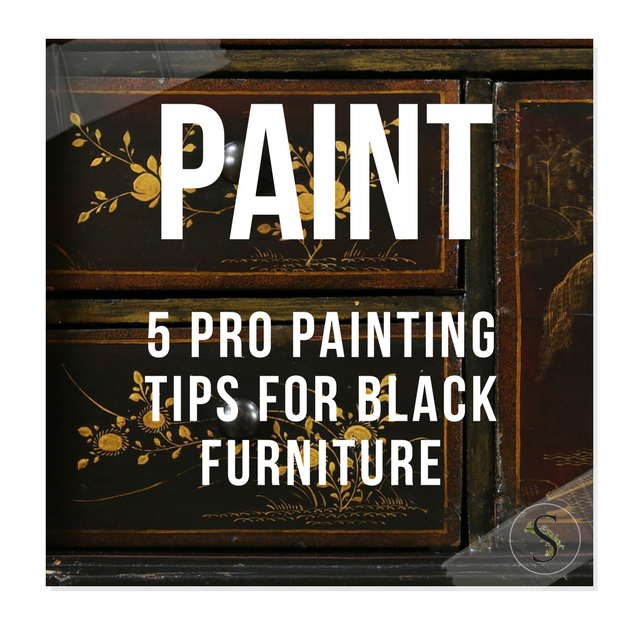
Anyone can paint a piece of furniture black, but there are certain tricks to make your painted pieces appear more valuable than they really are. Many of us feel that sensation of discovering a beautiful piece of furniture at a garage or estate sale, and then dreaming of what to do with it next. If you are anything like me, scrolling through pictures of paint chips, and color combinations can be a thrilling experience.
If you love lighter colored interiors such as white, light blue, or mint green, then black furniture might be a consideration for your interior. Painting a piece of furniture black can create tremendous contrast for your interior. Here are a couple tips to making your painted furniture look antique:
1. Use Matte Paint
You won’t find shiny finishes on the old antique furniture in Sweden. This article won’t cover the modern black painted furniture that one would expect to see in the 50’s or 60’s , but rather the aged furniture that someone could come across 100 or more years ago.
When selecting a sheen, consider starting out with a matte finish. Once the piece is dry you can add either a tinted wax or a tinted glaze to the final finish to give it even more depth. The sheen will then produce a look between flat and satin. Starting out with a low sheen will keep the overall finish looking rustic even after you apply additional paints.
2. Paint Your Hardware
While there are so many ways to feature hardware on black painted furniture, painting the hardware can be a smart way to making a black piece look understated yet elegant. Take a look at a French Provincial chest painted in olive by Knack Studios. The hardware was painted and carefully distressed. In this case, a little bit of distressing went a long way. Compare that photo, with this photo of a black painted bombe chest which is also painted in black. The hardware is painted, but not distressed. While bombe chests are considered some of the most spectacular pieces of furniture, this piece falls short for me.
– Darken your hardware with chemicals. Rockler sells a brass darkening solution that ages brass, copper and bronze metal. It allows you to change the color gradually so you can control how dark the final product turns out.
– American Accents by Rustoleum sells an Oil Rubbed Bronze spray paint that I have used on many pieces of my own furniture. After the paint has dried, simply distress the hardware with a sponge sander.
– 9 DIY Recipes For Rusty Hardware- Hersite
3. Show Off The Wood With Distressing
Adding a bit of interest to your furniture can go a long way. There are several ways to add patina. Two ways that come to mind is by distressing, and another is by layering paint.
A: Distressing is a sure way of adding depth and interest to a vintage piece of furniture. Some people like a LOT of distressing, and others like MINIMAL distressing. It is rather interesting to see how people fall into those two categories. Look at a few pictures on pinterest to decide what appeals to you. The best thing about distressing is if you go too far, simply just repaint the areas, which will tone down the distressing.
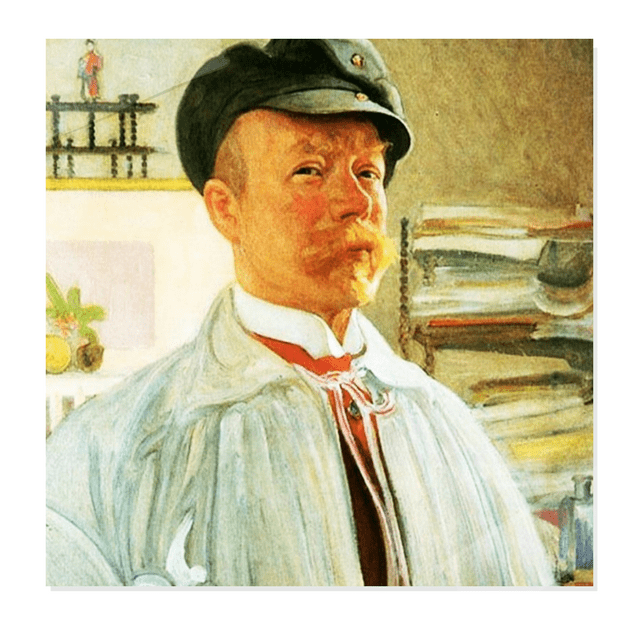
 Carl Larsson Alma – 18 x 24 Print $29
Carl Larsson Alma – 18 x 24 Print $29
Guest Post- Dawn- Bella Visione Blog
Carl Larsson is Sweden’s most recognized artist who depicted his idyllic life, with wife Karin and their children, in exquisite delicate watercolor paintings.
Born in Stockholm in 1853, he grew up in less than idyllic surroundings, being left by his father for his mother to rear. She worked diligently as a laundress, but earned very little. They lived in squalled conditions and he learned to work very hard as well.
At thirteen he was urged by his school teacher to apply for entry to the Stockholm Academy for Fine Arts. He was accepted, but it took some time for him to acclimate to the new, more refined surroundings.
He continued through school, became an illustrator and later moved to Paris to become an artist. He started painting in oils, but in 1882 having moved to Grez, (a Scandinavian artists’ colony) he transitioned to watercolors, which he mastered in six short months.
This is where he met Karin Bergoo and they soon married in 1883. Five years later Karin’s father gave the couple the house Lilla Hyttnas at Sanborn. This was to be the setting for many of Larsson’s paintings, capturing his life as it unfolded with his wife and their many children.
There were two major influences, whether knowingly or not, that shaped the creativity that took place within the walls of the Larsson home.
In 1891 a major exhibition of the Gustavian Style was compiled, this was in response to the look becoming popular once again in Sweden. This happened to be within the same time frame that the drawing room at Sanborn was redecorated in the fashion it still is today. The Gustavian tenets of light, refinement and unpretentious elegance are evident.
In the August 2010 issue of Home Beautiful, an editorial was written up on a garage in Salt […]

Bukowski is the leading auction house founded in 1870 by the Polish nobleman Henryk Bukowski. Bukowski Market also happens to be Sweden and Finland’s largest on-line internet site for quality auctions. Bukowski Market offers modern capabilities to the auction experience; one that combines online shopping with spectacular antiques and reliable expertise.
Bukowski pairs together buyers and sellers from around the world and allows antiques to be brought to the public for sale. All items sold at Bukowski have been reviewed by experts in showrooms in Stockholm, Gothenburg, Malmö, Helsinki, and Norrköping. Bukowski offers a large assortment of antiques, design, art and decorative items for all tastes. Before bidding from Bukowski, be sure to look at their terms of sale, and have your shipping and pick up arrangements set before bidding.
Woodland Chorus by Sanderson Ella by Arthouse Cielo Panel by Designers Guild Take me on a road trip […]
Elements of the 18th century Gustavian style still find their way into our decorating magazines some 200 years […]
Nationalmuseum, Stockholm | by Dimitry B Nationalmuseum, Stockholm | by Dimitry B Armchair Karmstol Mahogany, gilded details, 1820’s […]
5 Design Tips to Live By from Jane Moore – Veranda Veranda featured a wonderfully Swedish home way […]
In the March 2013 issue of House Beautiful Magazine, featured a home with a unique flair for the […]
Braided Rug 80″ Round Off-White $109 The careful selection of your homes rugs can really bring alive that […]
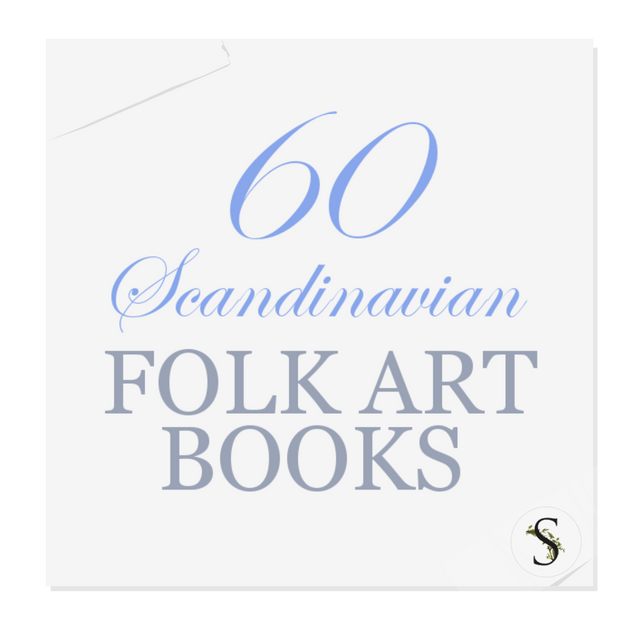
Scandinavia – made up of Denmark, Finland, Sweden, Iceland and Norway -has always had a unique mark on the arts through history. Whether it be needlepoint, embroidery, wood carving, furniture painting, knitting or any other local arts, they inspired each other in these regions, often drawing on the same color tones, motifs, and decorations.
The Nordic style craftsmanship and decorative themes can be seen unique to this northern area of Europe. Chances are if you love Scandinavian furniture, you will fall in love with so many of the different arts that are also found in this region.
Folk art, is celebrated in the international galleries around the world, but it also can be found in people’s homes, garages, and attics around Scandinavia. With access to to the internet, you don’t even have to know the back streets of Sweden, or speak the language to invest in high quality antique folk art. With esty and ebay within reach, you can pull together a collection for your interior without leaving your home.
“Folk art” is the most common term to describe the every day craftsmanship of people from one region or another, which depicted the artistic talent of life and times in art. Almost everyone has a hobby today, and it was more so, 100 to 300 years ago, when the family didn’t gather around the television for three hours each night. People had so much more time that could be devoted to the arts when the children were home schooled, and mom and dad worked off the land. Life was so much better back then, and you could have a little piece of that history.
The art was influenced by the culture, which is why German, Italian, and even American folk art each has their own style and flavor. Many of the popular collectible folk art pieces include handcrafted toys, quilting, wood carvings, and basket weaving. Folk oil paintings can be some of the most expensive range of collectibles within Folk art. Oil paintings emerged in the late 1700’s but only until the 1800’s did it really begin to flourish. Folk artists were often self-taught, and considered amateur artists due to the fact that they were not academically trained in the fine arts. These paintings are some of the most collectible of the wall art, and surprise, surprise,….sometimes they are inexpensive! It is amazing what you can find on ebay, if you are willing to wait.
Here is a collection of 60 books that focus their attention on Folk art, or the Scandinavian region in general.
Country Style Mora Clocks – Swedish Interior Design.co.uk Interior archive is one of those sites where you can […]
Chelsea Textiles, is a family company, which was originally started in the 1990’s by Mona Perlhagen. Formerly a […]
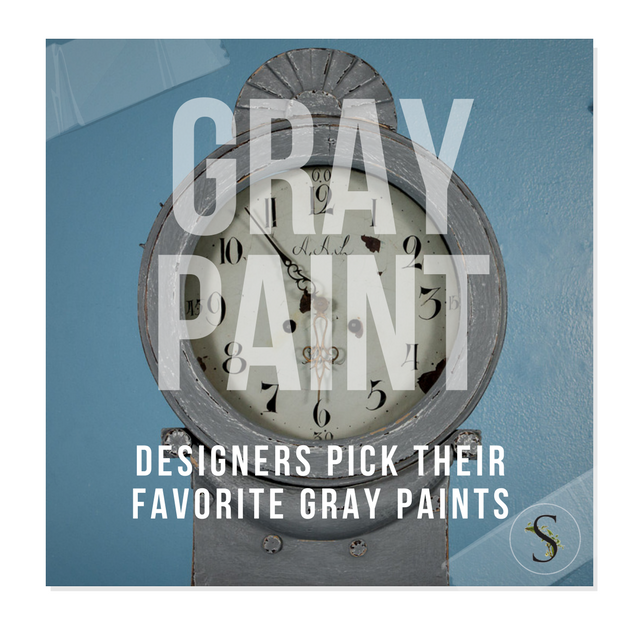
Picture Credit –Scandinavian Antiques Co On Ebay
Featured above are the colors, Top Row: Pratt & Lambert’s Argent 1322, Farrow & Ball’s Claydon Blue 87, Farrow & Ball’s Green Blue 84, Middle Row, Farrow & Ball’s Light Blue 22, Benjamin Moore’s Sea Star 2123-30, Benjamin Moore’s Wolf Gray 2127-40 Bottom Row, Benjamin Moore’s Graytint 1611, Sherwin-Williams’s Magnetic Gray SW-7058, Benjamin Moore’s Stone Harbor 2111-50
Home Beautiful featured an article on 26 Designers who shared their favorite Grays. Gray painted interiors can be the perfect color palette for Swedish Gustavian or Rococo antique furniture. Gray can showcase antiques like no other color, because it is neutral, and doesn’t compete with the furniture and decor. The last thing you want after spending thousands on a piece of furniture, is to have someone notice anything but what you spent your hard earned money on! Pair your painted gray antiques with a backdrop of white gray interior walls and trim, and add a punch of color with your upholstery, accessories, and flowers.
Many of the designers featured in the article, were those of Richard Gluckman, Stephanie Stokes, David Kleinberg, Tori Golub, Stephen Sills, Phoebe Howard, Steven Gambrel, Gerrie Bremermann, and Sharone Einhorn and Honey Walters.
Here are just a few of the designer quotes:
“Mesquite is a flattering light moss green without much yellow. I love it because it doesn’t shout ‘I’m green!’ It says, ‘I’m a very beautiful color.'” –Jennifer Garrigues, Benjamin Moore’s Mesquite 501
“Lago Argentino is a glacier lake in Patagonia, and it’s the most amazing color, an aqua, milky because as the ice melts it pulls minerals off the mountain. I stayed in an inn with a stunning view of the Perito Moreno glacier.” –Suzanne Rheinstein , Ralph Lauren Paint’s Blue-Green GH81
“For me, the most appealing colors in summer are not hot but cool. You don’t need to be reminded of the sun and heat — you’re in it. What you want is a cool breeze through the pine trees, like this chalky gray green.” –Frank Roop, Benjamin Moores Soft Fern 2144-40
“In my cutting garden I have morning glories climbing over a lattice obelisk painted this wonderful silvery sage green. It reminds me of lavender leaves.” –Michael Whaley, Benjamin Moores Cedar Grove 444
“I have a big, hugely functional Georgian Revival lawyer’s desk in tired dry mahogany, bought from a tired dry lawyer. I painted it this pale gray-green in an oil-base stain finish, cleanable, very calm, but not so pale that it dies. The gimmick is the old-fashioned desk in an unexpected color. It catches light and makes for a more interesting surface.” –Carey Maloney, Donald Kaufman Color Collections DKC-10
“It’s kind of robin’s egg blue, and with mahogany furniture and neutral upholstery, it looks great. I see dining rooms as mostly evening rooms, and this has life to it. It’s very soothing.” –Mariette Himes Gomez, Benjamin Moore’s Sage Tint 458
“Green is the great neutral, all the way from pond scum to soft sage or pale celery. I recently moved into a new house surrounded by greenery, and when I was thinking of what color I might use for a drapery lining, it came to me to reflect the green that is present year-round right outside that window.” –Barbara Barry – Donald Kaufman Color Collection’s DKC-8
“This is the color of the sky in Old Master paintings, when the varnish has yellowed; it’s luminous. Paint just the floor and you’d feel as if you were floating.” –Thomas Jayne, Benjamin Moore’s Heavenly Blue
“In my cutting garden I have morning glories climbing over a lattice obelisk painted this wonderful silvery sage green. It reminds me of lavender leaves.” –Michael Whaley, Benjamin Moore’s Cedar Grove 444
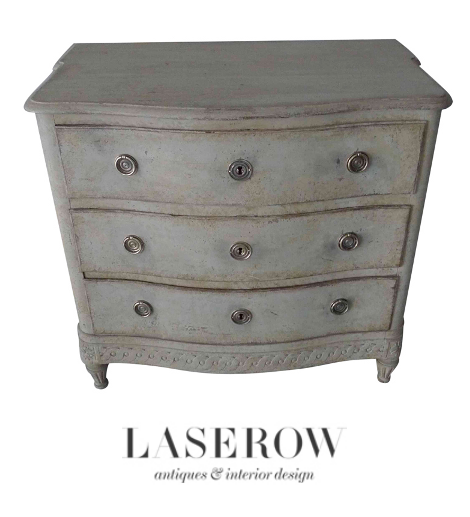 Gray Painted Swedish Furniture – Laserow Antiques
Gray Painted Swedish Furniture – Laserow Antiques
18th Century Swedish Tray Table – Jacqueline Adams Antiques
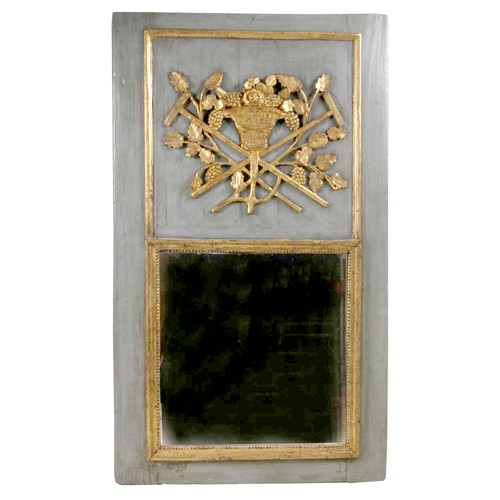
This mirror would have been part of a room paneling. It features a beautifully hand carved and gilded top panel of a basket with flowers and grape bunches before crossed mallets and grape branches and is surrounded with a square, gilt molded frame. Beneath is a square mirror framed with a beaded, molded edge
Andie, from Divine Theatre Blog, posted an amazing transformation of an outdated Mexican armoire, which was converted into […]

This Swedish home takes several chairs and combines them with a day bed. One way to unify several pieces of furniture is to simply paint them the same color, as they have done here.
“Söderbo” is a summer home, and perfect for all those who love history, because this home is practically untouched. Nothing has changed since the house was decorated in the 1920s. In fact, every piece of furniture, every picture, and the decor is such as it was in the early 1900’s. The interior lets in lots of light as large windows reveal the beautiful greenery outside. Elegant white painted furniture makes the home larger than it really is. Reading a book, playing a few games, and having a hot bath might be what you would do in this home in the summer months. Although you may have to haul in the water, and manually heat it! The modern amenities of the home are missing, but that doesn’t stop the owners from getting away and enjoying all the life that this property has to offer. Water must still be carried out and the food collected in the root cellar, so the children of the home don’t have to wonder how grandma and grandpa did things, the old way of live is very evident in the day to day functioning of the home.
“Söderbo” in the past was only used as a summer house. Servants were brought out into the country with lots of luggage, and the residents from the big city enjoyed the summer life to rest and enjoy the rich fresh air, and all that the countryside could offer. Besides the main house, the property is equipped with a boathouse pre-existant from the mid-1800s, a root cellar and a cabana by the water.
Inside the house, white painted wooden furniture shows a classic Swedish design which can be seen throughout the home. The furniture was originally purchased back in the days of the era’s most fashionable department store NK. The various pieces of furniture are seen in the country style which if fluent in the dining room, bedroom, desks, chairs and shelves. The kitchen is set up to function for food preparation, such as cooking, baking and canning. The upstairs of the home is mostly how it was originally. Some fabrics have been worn through time and replaced, but the beautiful Art Nouveau wallpaper in the parents’ bedroom are original. Gather some ideas from this time period for your home.
Images and full article found on husohem.se 
“Söderbo” A Home Untouched Since 1920
A rare pair of Swedish Art Deco 2-arm mirror sconces designed by Gustav Bergstrom. Frames are gilt over pewter and Incised with a serpentine pattern.The frame tops are decorated with a sculpture of a lotus flower flanked by 2 mythical sea creatures. Candles are newly wired for candelabra bulbs. Mirror glass is original and show highly desirable movement in the reflection. Sconces are the perfect example of “Swedish Grace” style.
Delicate gilt wood Swedish Art Deco wall mirror with cared details depicting a sunburst and ancient oil lamps. Mirror glass is original and has a one inch beveled edge
“Söderbo” A Home Untouched Since 1920
Swedish Portrait -the figure of noble women, in courtdress, within giltwood frame The Style Saloniste posted an interview […]

Mary Mulcahy’s designs, first developed for her block-printed textiles, now grace the wall with the Les Indiennes collection by IVM Prints. The 12 hand-screened wallpapers include Rayure, left, and Veronique, both in indigo; additional colors are offered, Seen in Elle Decor April 2011
The company Les Indiennes is known for their beautiful hand-blocked textiles. Founder, Mary Mulcahy had a desire to find naturally dyed cotton, with large scale single colored motifs, but was unable to locate fabrics close to what she had in mind, so she created her own. Her concept started to take form after running into a craftsman in southern India, who knew exactly what she was after. In fact, the craftsman was one of the very few artists who still practiced the ancient art of kalamkari, which was an extremely complex and rare method of printing on fabric.
The Kalamkari Process:
1. Fabric Preparation- Cotton fabric is initially softened and bleached. This process needs to be done before any printing takes place. The process involves bales of organic cotton which are repeatedly rinsed and beaten against large rocks, then laid out on the grass to bleach in the sun. These steps ensure that the fabric will feel soft and luxurious, and so that the color application remains bright and vibrant.
2. Block Printing- After the fabric has been softened and lightened, printing begins. Craftsmen dip hand-carved wood blocks in dyes and presses them into the cotton. The dyes are derived from plants, roots, earth, and rock. One can only imagine the great care, and measurements taken to ensure the patterns are straight and line up with one another. Today we take for granted large printing machinery, when at one time, much of this work was done by hand. At Les Indiennes, the fabric is printed by hand, and hours go into each fabric panel. After the patterns are applied, the printed fabric is air dried for at least two days.

Swedish winters are long, dark and dreary, so historically Swedes have always turned to lighter interiors. Swedish style isn’t all about the gray and the white interiors they are famous for, but many homes feature brighter, richer colors to decorate around.
There are so many shades and tones of paint, that it can be impossible to decide on one color. Buy sample-size colors to help you make the perfect selection. A color can look quite different at night than the day. We recently painted the outside of our home, and the color which looked to be a creamy yellow at night, turned green in the day. Be sure to try your selected colors on a few different walls to determine what suits which room. You’ll thank yourself for making this extra effort before spending $$$ on the wrong shade.
Don’t judge the room until the paint is in place, and accessories and furniture are placed. A color which may seem to bright can be toned down by wall accessories, coordinating drapes, and art work. Consider working with the off shades of the primary colors. Intead of purple, consider lilac, or a raspberry tint.
Consider whether you are a warm or cool person. I once was asked this by a hairdresser, looking to choose a shade of blonde. I never gave it much thought before, but knowing which color you lean towards can certainly make picking colors a lot easier. Earthy reds, dusty warm plums, and rusty golds are in the warm color range. Silver blues, mint, and lavenders are colors which are cooler.
Advice From Pros
“Design is not just what it looks like and feels like. Design is how it works” Steve Jobs
“Green pigment was expensive in the 18th century, making it a status symbol. So it would have been appropriate for the royal governor’s house. I’ve been a curator at Colonial Williamsburg for 20 years, and when my husband and I lived in a historic house, we had similar green woodwork. It worked with every fabric I wanted to use, and it’s a great mood enhancer—chlorophyll for the spirit!” —Liza Gusler
“People think that they need to use small furniture and light colors to make a small room look big, but that’s not the case at all. Dark colors and just a few pieces of large-scale furniture, with the appropriate lighting and accessories, can give a room a larger, more luxurious feel.” —Mona Hajj
“Everything else in my house is off-white and grey, and I just had to have a break from that. I was looking at my pond, which is this murky shade of acid green, and I thought, ‘I’ll do that in high gloss to make it even more watery and translucent.’ It’s strange, but I love it.” —Stephen Sills
“Luxury must be comfortable, otherwise it is not luxury.” – Coco Chanel
“While looking at one of my first New York apartments, David Hicks told me diplomatically,’Dear boy, if you’re going to paint the walls white, you need art.'” Peter Dunham
“The only time white curtain lining should be used is with white curtains- J Randall Powers
“Use the precious for everyday purposes. We’ll rummage through clients closets and find loads of precious hand-me-downs like porcelain vases and crystal that are a bit out of vogue. We’ll use them for completely ordinary purposes – a case becomes a chic pencil holder, a crystal bowl holds makeup brushes. Turn the ordinary into a special moment” Benjamin Dhong
“I learned that passion about objects and furnishings makes for fearless decorators—and that if you are comfortable in your home, everyone else will be too. That sense of authenticity is what gives a home its soul.”- Courtnay Daniels Haden
“The most elegant interiors are just slightly tatty.” – David Netto
“Playing it safe. Instead, put a large-scale printed fabric or wallpaper on the walls and even the ceiling. It’s easier, safer, and less expensive to be dramatic in a small space. You might get tired of a bold print in the main living area, but it can make a smaller, less-used room an exciting space to spend time.” —Victoria Neale
The “Kakelugnar” stove is a Swedish tiled stove whose design is still in use today. This classic stove dates back to […]
Karen Blixen’s Danish Farm godsochgardar.se After 17 years in Kenya, Danish author Karen Blixen returned to her childhood home in […]
Osterbybruk The 1700 Collection Swedish Furniture produces furniture that combines the elegant shapes of the furniture found in 18th century Sweden. With […]
Make this bee mold for just dollars. Find the original listing here Classic Swedish Interiors By Lars Sjoberg […]
Drop leaf table made in Stockholm, Sweden. Details according to the periods highest fashion such as lion feet […]
Stola Herrgård, Sweden Wallpaper can make a tremendous difference in a room decorated around the Swedish style. It has […]
Curtains in Tisbury | Ben30 | Flickr Picture Credit- Goodhousekeeping Magazine Authored By Curtain Pole Wizard Rooms with […]
Guest Post By Corey Amaro, Tongue In Cheek Blog Crystal chandeliers sparkle like stars above A. Tyner’s Swedish […]
Garbo Interiors was founded by Anneli Ullman and Barbro Sahlin. After training in design and decor, both in Sweden […]
Louis XV Limed Oak Chest In 1975, Frantz Hemeleers opened a small shop in Etterbeek (Brussels), and over time, it […]

